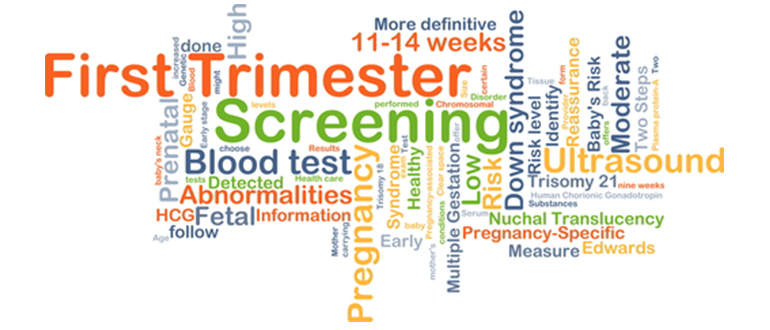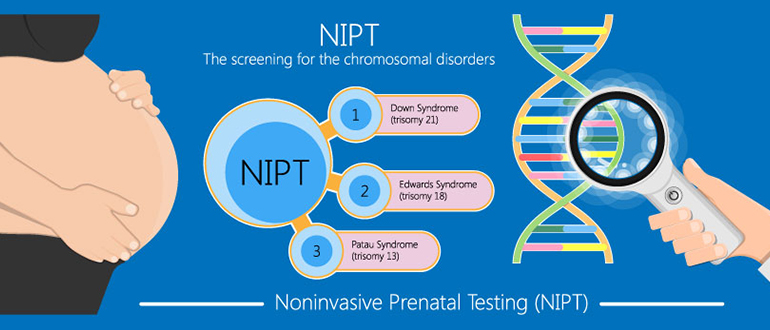toh
First Trimester

Generally, it is preferable for us to see multiple pregnancies in the first trimester. This is the best time to date the pregnancy, determine the type of multiple pregnancy, and screen for relatively common genetic conditions. All pregnant women in Ontario are offered first-trimester screening for aneuploidy, genetic conditions affecting chromosome number such as Down syndrome (Trisomy 21) and Trisomy 18 (Edward’s syndrome). The test includes two serum markers (a maternal blood test) and ultrasound measurement of nuchal translucency (NT), which can be done as early as 11 weeks of gestation. This screening test is also available for twin pregnancies, for which the results are a little more challenging to interpret.
The result determines risk for the whole pregnancy. Specifically, for monochorionic twins, it is the risk that both twins are affected. For dichorionic twins, it is the risk that one or both twins are affected. For further information about FTS in Ontario, visit this website or discuss with your physician.
Non-invasive prenatal testing (NIPT)

Non-invasive prenatal testing is a screening test for certain chromosomal abnormalities. It assesses the presence of circulating fetal DNA not attached to any cell (cell-free DNA) in maternal blood. While it can be performed for twin pregnancies, results are harder to analyze. For example, in twin pregnancy, if the NIPT suggests possible Down Syndrome, it can be difficult to know which fetus is affected. Therefore, further discussion with your physician would be indicated and we could suggest invasive testing (i.e. amniocentesis). If results are normal, this is very reassuring to future parents. NIPT cannot be performed for triplets or higher order multiples.
Last updated on: April 30th, 2021


 To reset, hold the Ctrl key, then press 0.
To reset, hold the Ctrl key, then press 0.